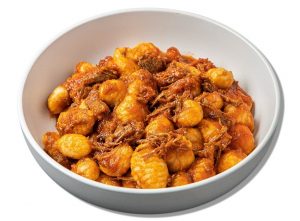Choosing a takeaway pasta is always a hard decision. You want to ensure you get the right pasta for your needs and budget, but there are also tips you can use to make the best meal possible. Here are some of them: Extra virgin olive oil and butter. You can also use Resistance starch and add a little touch to make your dish stand out from the rest.
Olive oil
 When you want to enjoy the taste of traditional Italian cooking at home, you should choose a good quality olive oil. Olive oil is the only vegetable fat that is not refined, and because of that, it retains all of its nutrients. To find the right olive oil, check the label, or ask the vendor for guidance.
When you want to enjoy the taste of traditional Italian cooking at home, you should choose a good quality olive oil. Olive oil is the only vegetable fat that is not refined, and because of that, it retains all of its nutrients. To find the right olive oil, check the label, or ask the vendor for guidance.
Olive oil is ideal for preparing pasta dishes. The oil should be light and low in heat. After the pasta is cooked, add a little cheese and toss it into the oil. This will keep the pasta moist and free of sticking. If you have leftovers, you can refrigerate the pasta for up to four days. You can also reheat it in a skillet, preferably with some oil, over medium heat. Once cooled, you can enjoy it on its own or with one of the following side dishes.
While Italian cuisine is famous for its olive oil, you can find fakes in many supermarkets. Olive oil may even be labelled as “extra virgin” and be made from a blend of cold-pressed olives and processed oils. If you’re unsure, look for the PDO stamp, which notes the place of production. You can be confident in its quality if you find authentic PDO olive oil.
One reason to avoid using olive oil in takeaway pasta is that it will make the pasta stick to the sauce, which makes it tasteless. It can also leave wads of sauce on the bottom of your plate. Not only does it taste bad, but it also makes the finished product look terrible. But it doesn’t affect the pasta’s cooking time. When drained, the oil will float on top of the water and coat the pasta. Because the pasta has been coated with the oil, it won’t stick to the sauce.
Olive oil is beneficial for your health in many ways. It’s low in cholesterol and has anti-inflammatory properties. It’s also a good source of antioxidants, which help fight off aging and chronic heart disease. Plus, it doesn’t cause weight gain!
Butter
Butter for takeaway pasta from pastagogo.com.au can be a challenge to prepare, but it’s not impossible. The key is to know how to prepare the sauce. You can use extra-virgin olive oil or a substitute. Butter can make the dish overpowering, while olive oil is a lighter alternative.
First, you’ll need to boil the pasta in salted water. Once it’s cooked, drain and reserve about 3/4 cup of the water. Meanwhile, heat the butter on medium heat. Add the garlic, making sure to keep it from browning. Then, add the pasta and stir until it’s coated in the sauce.
Resistance starch
Are you aware that some takeaway pasta contains resistant starch? If you are not sure what this is, it is a type of fibre that is high in carbohydrates. This type of fibre can contribute to digestive discomfort if eaten in large amounts. To avoid this, try to limit the amount you eat. You should also increase your water intake, especially on a diet. It is also a good idea to cook starchy foods at home to increase the amount of resistant starch they contain. This way, you can save time in the kitchen and eat a complete meal.
Fortunately, resistant starch is easily available and inexpensive. This means it’s not difficult to incorporate into your diet if you want to feel better. One key to finding the right amount of resistant starch is understanding your body’s reaction to it. It’s also helpful to understand how your genetic makeup affects your health.
Resistant starches can be found in many foods, including nuts, seeds, and legumes. They are also present in green bananas, which is why green banana flour is an excellent source. Other sources of resistant starch include rice and potatoes. The bacteria produce butyrate and vitamin K2 in the intestine. These substances support the immune system and reduce inflammation.
In addition to improving blood glucose levels, adding resistant starch to your diet can also improve your microbiome and decrease your risk of diabetes, obesity, and heart disease. In addition, it can help reduce the amount of cholesterol in your body. Research has also shown that resistant starch can help you lose weight.
However, you should be careful when adding resistant starch to your diet. It is important to start small and increase it gradually. It is essential to make sure your body can handle the new intake. You should aim for 2 or 3 servings of resistant starch each day. When you have reached this goal, your diet can increase its intake.
Research suggests that resistant starch can reduce your risk of diabetes and improves your insulin sensitivity. A resistant starch diet may also lower your risk of colorectal cancer. However, larger studies are needed to confirm these claims.
Adding the last touch
Adding a final touch to your takeaway pasta Adelaide is one of the easiest ways to give your dish that extra zing. Some pasta benefits from the acidity of lemon juice, while others are enhanced with freshly ground pepper. You can also add an extra kick by adding some toasted breadcrumbs.
